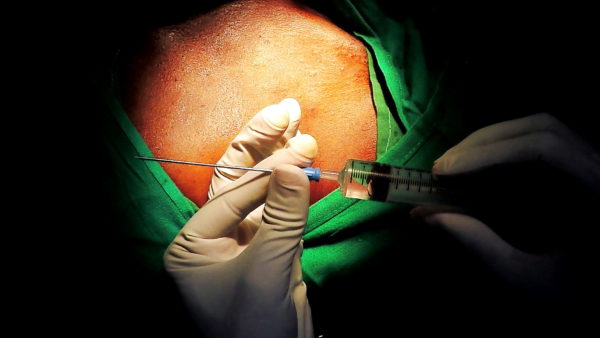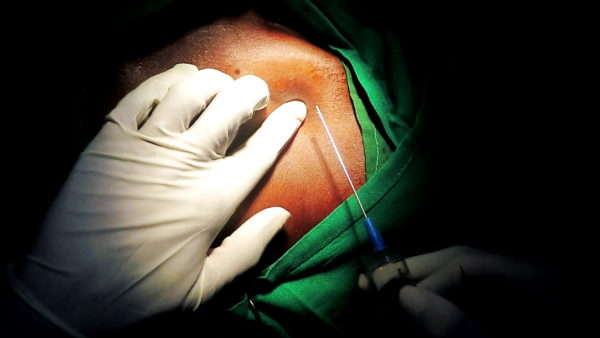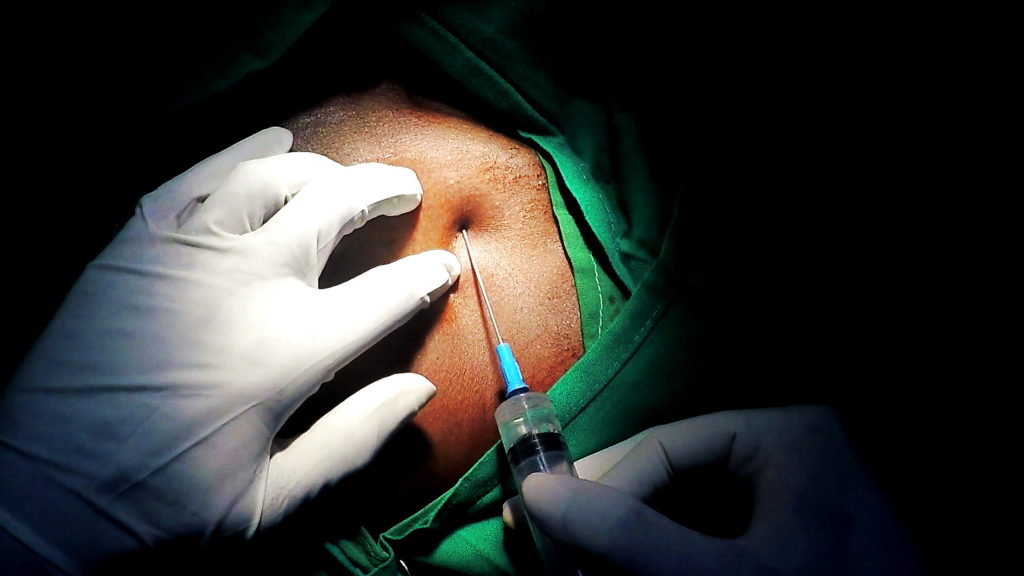section under review.
Overview
The other method of subclavian venous access is by puncturing the vein before it crosses the first rib. (i.e. puncturing the the proximal axillary vein.) The merits of this technique include is lack of lead crush and much reduced risk of pneumothorax. However this is a difficult technique compared to the above subclavian access technique and the key is to understanding anatomy and hands on experience. Axillary vein access is the recommended method for implanting leads
Note : Axillary vein access denotes any venous access lateral to the medial border of the first rib. From a semantics point of view – this also includes the extrathoracic part of the subclavian vein. Keeping in common use, axillary access is the preferred term as – extrathoracic subclavian vein access is a mouthful.
Fluoroscopy guided low approach using the first rib as a landmark

Figure :
The technique is shown below in pictures of an acutal performance of a puncture, followed by a video clip
First rib based low approach to the axillary vein- VIDEO
Note : Gentle movements avoidance of breaching the medial border of the first rib are the cornerstones of avoiding inadvertent deep tissue (lung) entry
Ultrasound guided access
If one has access to a vascular ultrasound probe, then the axillary access can be either performed entirely using with aid of ultrasound or facilitated to avoid or minimize the need of a venogram
Ultrasound guided direct access involves visualizing the vein and guide the needle to the vein while observing the tip of needle entering the vein. This requires a specific workflow and is described here



